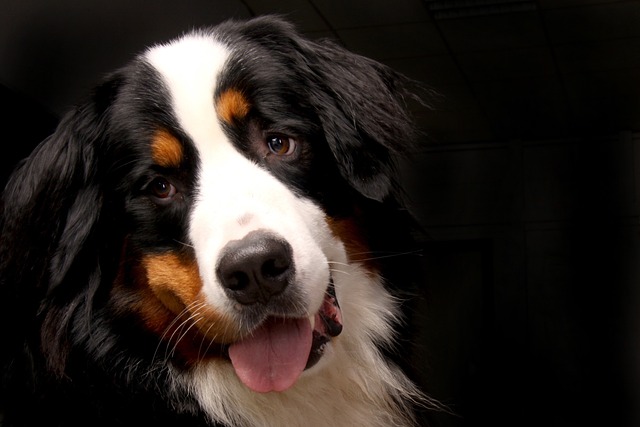
How do i train my dog to be obedient?
Watching your dog dart across the park ignoring your calls isn’t just frustrating—it can put them at risk near busy streets or public spaces.
Dogs, as our closest companions in life, bring us endless warmth and joy with their company. However, the problem of dogs excreting randomly often troubles their owners. Learning how to train dogs to use the toilet in a fixed place not only keeps the home environment clean but also is an important part of building a good human - pet relationship.
From a professional perspective of pet ethology, dogs have an innate sense of territoriality and an instinct for scent - marking. In the wild, they choose specific areas to excrete in order to mark their territory and avoid contaminating their dens. By taking advantage of this characteristic, we can guide and reinforce dogs to establish a fixed toilet area at home. This not only conforms to their instinctive behavior but also helps them build a sense of security and order in the family environment.
Choosing the right toilet location is the first step in training. This location should be relatively quiet and private, away from the dog's eating and resting areas to avoid causing them discomfort. For example, a corner of the balcony, a corner of the bathroom, or a dedicated storage room in the house are all good choices. Once selected, do not change it easily, so as not to confuse the dog. At the same time, prepare a special toilet tool for the dog, which can be a dog toilet, pee pads, or an area covered with newspapers. The material of these tools should be easy to clean and be able to absorb the smell of urine to attract the dog to excrete.

The training process requires the owner's patience and carefulness. Dogs usually need to excrete after waking up, within 30 minutes after eating, and after playing. During these periods, the owner should closely observe the dog's behavior. When the dog starts sniffing around on the ground, circling, or showing signs of restlessness, these may be signals that it is about to excrete. At this time, the owner should quickly and gently carry the dog to the designated toilet area and encourage it in a gentle tone, such as "Good boy/girl, go to the toilet here." At the beginning, the dog may not understand the owner's intention, so patience is needed. If the dog excretes in the designated area, immediately give a reward, which can be a delicious snack, or affectionate stroking and praise. This positive reinforcement can make the dog associate excreting in the designated area with a pleasant experience, thus gradually forming a habit.
However, setbacks are inevitable during the training process. The dog may excrete in the wrong place. At this time, the owner must never scold, beat, or punish the dog. Because the dog cannot understand why it is being punished, and instead, it may develop a psychological shadow due to fear, affecting the training effect. The correct approach is to clean up the excrement with tissues or old newspapers and use a cleaning agent to completely remove the smell to prevent the dog from being attracted to this place again. Then, take the dog to the correct toilet area and guide it again. If the dog frequently excretes in the wrong place, the owner needs to reflect on whether the training method is appropriate, whether enough attention and guidance have been given, or whether the location and environment of the toilet area need to be adjusted.
From an emotional perspective, the process of training a dog to use the toilet is also a process of building a deeper level of trust and intimacy between the owner and the dog. When the dog excretes in the wrong place, the owner's patience and understanding can make the dog feel more love and care than severe punishment. Every successful guidance and reward is the owner's affirmation and encouragement to the dog, making the dog more dependent on and trusting of the owner. And when the dog finally learns to use the toilet in a fixed place, the owner's joy and sense of achievement are indescribable. This emotional communication and interaction not only make the dog's life more regular and comfortable but also make the owner's life more harmonious and beautiful.
Training a dog to use the toilet in a fixed place requires the owner to master scientific methods and invest sufficient patience and love. By understanding the dog's behavior habits, choosing the right toilet location, and giving timely guidance and rewards, we can help the dog develop good living habits. This is not only a demonstration of love for the dog but also an improvement of our own quality of life. Let us accompany the dog through this growth stage with love and patience and jointly create a warm and clean home.

Watching your dog dart across the park ignoring your calls isn’t just frustrating—it can put them at risk near busy streets or public spaces.

New puppy owners often find themselves rushing to clean up accidents before they set in, and that’s where puppy pad training becomes a game-changer.

If you've noticed your dog's waistline disappearing and your veterinarian has mentioned those few extra pounds, your first instinct might be to simply reduce the amount of food in their bowl.

Training a dog to use a designated spot indoors isn’t as daunting as many new owners fear, but it does take consistency and an understanding of your pet’s needs.

That moment of dread on a walk is all too familiar for many new dog owners. You see another dog approaching down the sidewalk of your neighborhood

If the sight of another dog on your neighborhood walk makes your heart sink as your own dog erupts into a frenzy of barking and lunging, you're not alone.